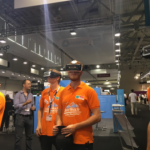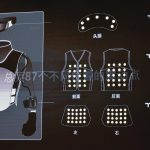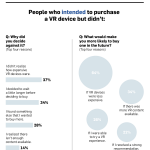Google releases Chrome version with the first browser support for WebVR
New capability means that users no longer need to download an app to view online VR.
Google is today updating its Chrome browser for Android with the first browser support for Web VR — a capability that could dramatically affect the use and development of VR content.
Previously, if you wanted to view VR content in a stereo headset viewer like Google’s Daydream View, you had to download one of a number of VR apps. Like the company’s Cardboard viewer, Daydream View works with a smartphone as the display and processing unit. This newest Chrome is the stable release; a beta version of Chrome with WebVR support was announced in December.
In this WebVR-supporting Chrome browser, the user can simply click a button and then see the material as VR in the viewer. WebVR supports Daydream’s accelerator for tracking head movements, and its remote control. Or users can view non-stereo VR content through Chrome on a desktop or laptop and navigate it with their finger or a mouse. No separate app to download, no multitude of apps that developers need to target.
Here are some sample VR environments from Google partner Sketchfab:
This changes the game for how online VR content is distributed and used, PlayCanvas CTO Dave Evans told me. His company provides a toolset for building interactive 3-D VR content, mostly for agencies and game developers. Now, instead of asking users to download an app to view the content, users can simply share a web link.
Here’s a teaser from WebVR Lab, which offers a variety of VR worlds:
Ashish Agrawal, head of VR at Matterport (here’s their VR gallery), noted that Firefox, Microsoft Edge and other browsers have indicated they will also support WebVR, although Apple has not yet committed for Safari. Support for Google’s Cardboard viewer is expected soon, with support for desktop-based viewers like Oculus and HTC Vive on the roadmap.
He noted that his company makes a 3-D camera that automatically captures any physical space in three dimensions, turning it into a 3-D VR model you can explore.
It’s widely used in the real estate and travel industries to “visit” remote locations, he said, but users have had to download Matterport’s app or the app that Matterport created for the client company.
Now, users can just open a WebVR-supporting browser. The VR content can reside in a website, and be seen through a viewer via the same browser.
A WebVR-enabled browser makes life somewhat easier for developers, he said, because the VR experience can be developed once and tweaked for various environments — instead of developing the VR for separate apps
Marketing Land – Internet Marketing News, Strategies & Tips
(38)















